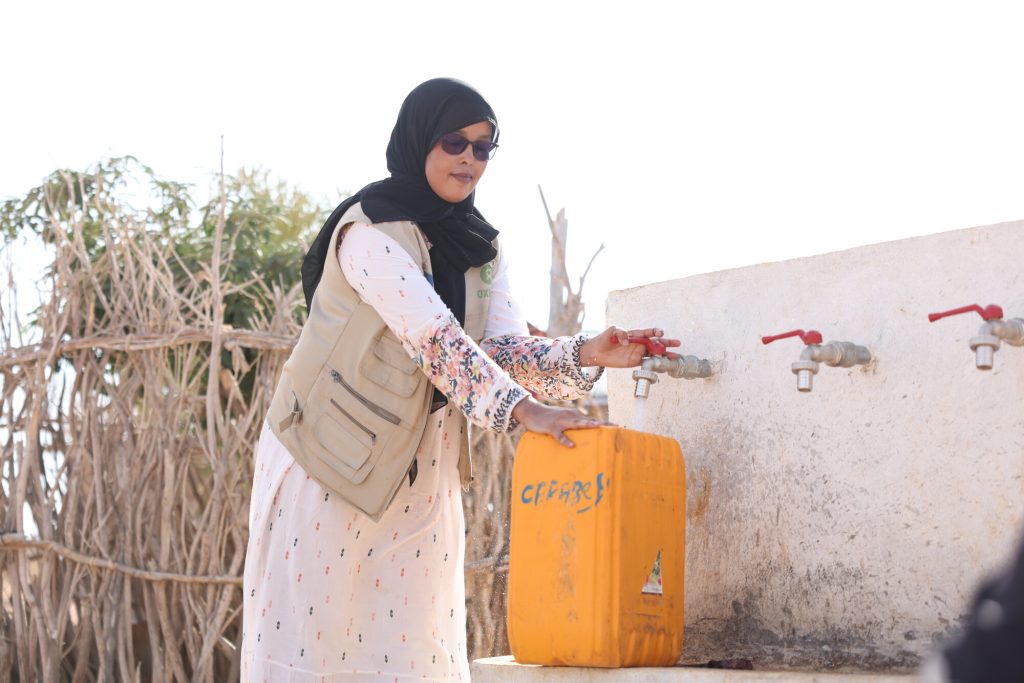Why Gender Justice is Critical to Climate Justice
The Case for Feminist International Climate Finance
The climate crisis has worsened the frequency and severity of natural disasters such as hurricanes, floods, and droughts. However, not everyone is equally affected by these destructive events. Women, girls, and gender-diverse people, particularly those living in poverty, face the most severe consequences.
Unfortunately, they have limited access to resources and are often excluded from decision-making processes essential to their well-being. Their voices and rights are often disregarded in developing policies related to the climate crisis. And the current state of climate finance isn't benefiting them either.
Only a third of international climate finance for low- and middle-income countries goes to projects designed with gender equality outcomes, as Oxfam's Climate Finance Shadow Report 2023 highlights. A mere 2.9 per cent of this funding is allocated to projects primarily focused on gender equality.
We need feminist international climate finance because it's clear that most climate action initiatives aren't tailored to meet the particular needs and priorities of women, girls, and gender-diverse people. They also ignore the crucial role of women's leadership in climate solutions, which ends up reinforcing gender inequalities.
Below, we explain what this type of finance means and why it matters.
What's a feminist approach to climate?
A feminist approach to climate justice challenges the economic, social, and political systems that have created the climate crisis and hold countries, companies, and individuals accountable for their climate commitments. This approach also applies an intersectional gender analysis to understand better how the climate crisis affects people across genders and diverse identities to tailor solutions that address these differences.
Why is feminist international climate finance necessary?
When we talk about climate finance, we're talking about the funds that support actions to address climate change. This type of finance rests on the principle of international environmental law known as common but differentiated responsibilities. This principle states that all countries have a duty to take climate action. However, their actions will depend on their differing national circumstances, as some countries are less economically developed than others.
Low-income countries have contributed the least to the climate crisis and yet absorb its most severe impacts. This is why rich countries should take the lead in providing financial assistance to developing countries to mitigate and adapt to climate change.
Adopting and implementing a feminist climate finance would enable women and other vulnerable people to:
What has Canada done so far to support gender and climate justice?
Canada increased its focus on gender equality in its 2021-2026 climate pledge. However, less than one per cent of the country's plans specifically address initiatives that support gender equality and women's rights, which are crucial for making a real impact in advancing gender justice in the fight against climate change.
What's the situation globally?
Despite public commitments, donors, multilateral development banks, and United Nations agencies are failing to prioritize locally-led climate action. On the other hand, women's rights organizations, especially those at the grassroots level in low-income countries, understand which climate solutions can be gender transformative and lead to equitable outcomes for everyone in their communities. However, they lack the power and resources to implement them, even though they know what works and have the ingenuity, commitment, and resolve to generate change.
Placing women's rights and gender justice at the heart of climate initiatives will make solutions more equitable, lasting, and successful.
Potential Solutions
To effectively address gender inequality and climate change, we must tackle the unequal and patriarchal systems that have historically dominated climate financing. Governments, financial institutions, and private actors should take these simple yet powerful measures:
- Direct climate financing to initiatives that support women and gender-diverse people.
- Ensure funding mechanisms include gender analysis and that initiatives lead to gender equality and climate justice outcomes.
- Provide leadership opportunities and space for Indigenous peoples, civil society, and women's organizations to lead the charge in climate initiatives.
Governments, financial institutions, and businesses should recognize the significant contributions made by women and gender-diverse people in coping with climate disasters. They should be at the centre of all adaptation and mitigation efforts; otherwise, these initiatives will fail or have limited impact.
Resources to learn more about climate and gender justice
- Briefing note: No climate justice without gender justice: the case for feminist international climate finance.
- A toolkit for building inclusive climate advocacy: Feminist Approaches to Climate Justice.
- Report: Climate Equality: A Planet for the 99%.

